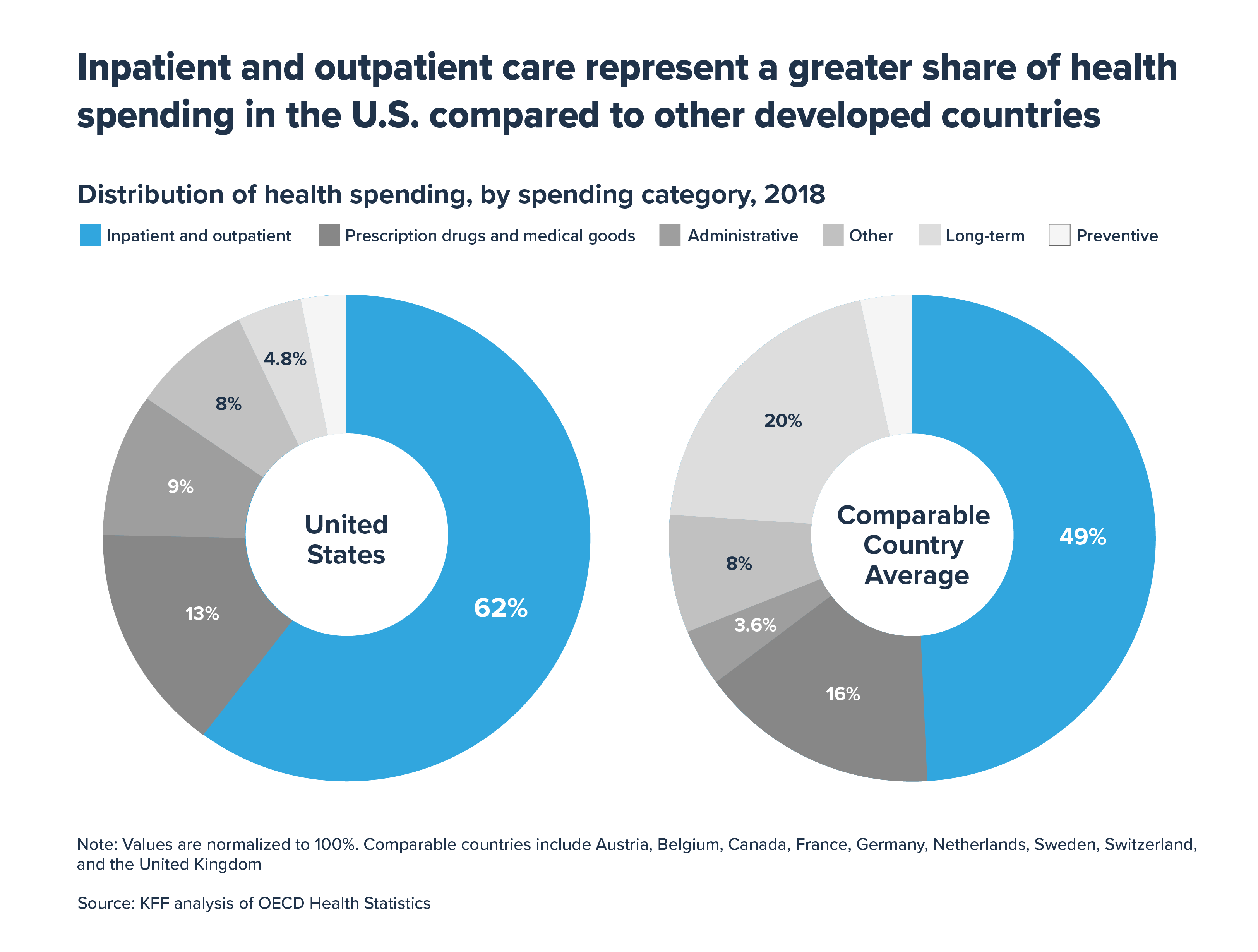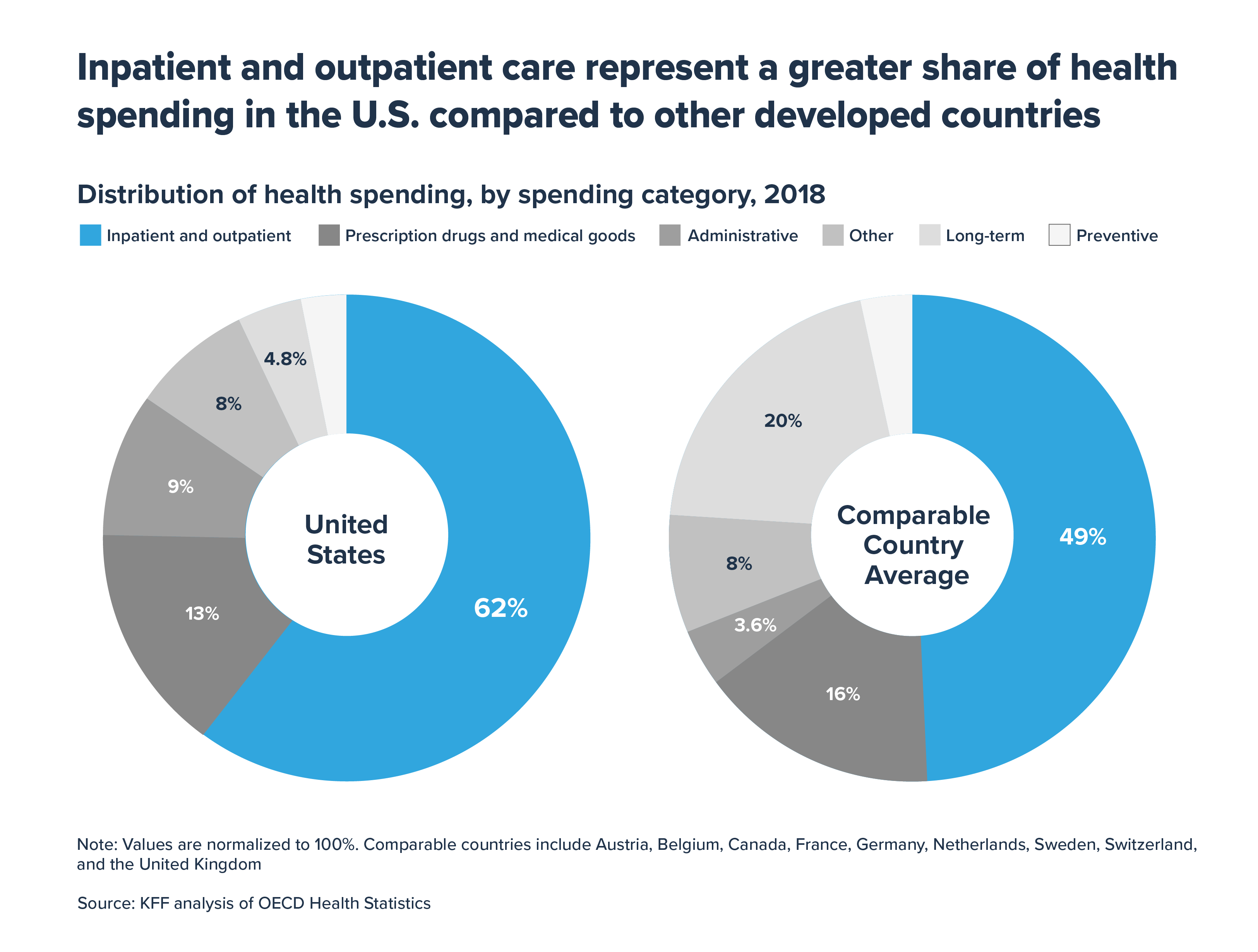A number of past analyses have shown that hospitals drive U.S. health care spending. In fact, data released last year showed that the United States spends three times more per person on hospital care than on retail prescription medicines. A recent Peterson-KFF Health System Tracker analysis takes these findings a step further, concluding that hospital and outpatient care are not only the biggest drivers of U.S. health care spending but also the biggest drivers of the difference in health care spending between the United States and other developed countries.
While in total the United States spends nearly twice as much on health care per capita than other developed countries considered in the analysis, the authors found that more than three quarters (76%) of this difference is driven by inpatient and outpatient spending. The authors found just 10% is related to spending on medicines and other medical goods.
Looking at it another way, the KFF analysis found that the United States spends 62% of its health care spending per capita on inpatient and outpatient care compared to 49% in the developed countries included in the study (Austria, Belgium, Canada, France, Germany, Netherlands, Sweden, Switzerland and the United Kingdom). 
This study is a reminder that medicines are just one piece of the health care cost picture. Unlike the difference in spending on hospital and outpatient care, previous research has shown that spending on prescription medicines accounts for a similarly small percentage of total health care spending in the United States as in other developed countries. Yet discussions on U.S. health care spending tend to be disproportionately focused on prescription medicines. As policymakers consider ways to address patient affordability challenges and U.S. health care spending as a whole, it’s important to consider what aspects of health care are actually driving spending and take a holistic approach to developing policy options.
Learn more at www.letstalkaboutcost.org.




